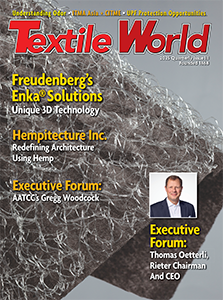PITTSBURGH — February 27,2018 — Revtown, a new denim brand, recently launched its first collection of hand-crafted, premium jeans, exclusively available at www.revtownusa.com.
Revtown Jeans are built with DECADE DENIM™, the brand’s patented fabric that is infused with four-way, dynamic stretch, and constructed with the strongest fibers in apparel design today.
“We’re thrilled to announce the launch of Revtown,” said Henry Stafford, Founder and CEO of Revtown. “With Decade Denim, we’ve created a level comfort, fit and feel that hasn’t been experienced in a pair of jeans. Two months in, we’re off to a great start. And we’re proud to deliver our jeans directly to the consumer for less than half the price of a typical pair of designer jeans.”
This first Revtown collection is designed for men. A women’s collection is in design for next year.
Revtown was founded by a group with extensive experience in the apparel world. Stafford and Steve Battista, Revtown’s chief marketing officer, worked together for nearly a decade at Under Armour as leaders of product, and brand, respectively. Stafford was chief merchandising officer at American Eagle Outfitters before spending more than six years at Under Armour, overseeing product and all of the company’s North American business. Battista served as Under Armour’s head of brand and creative, among other leadership roles over 17 years.
The company’s founders also include Matthew Maasdam and Chris Lust. Maasdam, Revtown’s chief digital officer, served 14 years as a Navy SEAL and later as the U.S. Navy’s aide to the President of the United States, before running e-commerce operations for Under Armour. Chris Lust, founder and partner of Dock Street Capital Management and SLC Capital Management, will serve as Revtown’s CFO.
The Revtown product team boasts some of the top designers and engineers from the most innovative athletic apparel brands today, complemented by a denim manufacturing team that has made over 150 million pairs of jeans, with a combined 100 years of denim production experience.
Revtown Jeans come in two styles, SHARP and AUTOMATIC. Sharp jeans are fitted with a refined look, more dress than casual, yet with the flex of DECADE DENIM™. Automatic jeans are for “any guy, any time, any place.” Automatic jeans are designed to be mobile, not baggy, providing ultimate comfort without having to size up.
Revtown also offers Revtown Shirts, made from world-class Pima cotton. Revtown Shirts come in four essential styles, including Crew, V-Neck, Henley and Polo. Also available as Revtown launches are Revtown Crates, offering two pairs of jeans and any three shirts for just $210.
Posted February 27,2018
Source: Revtown




